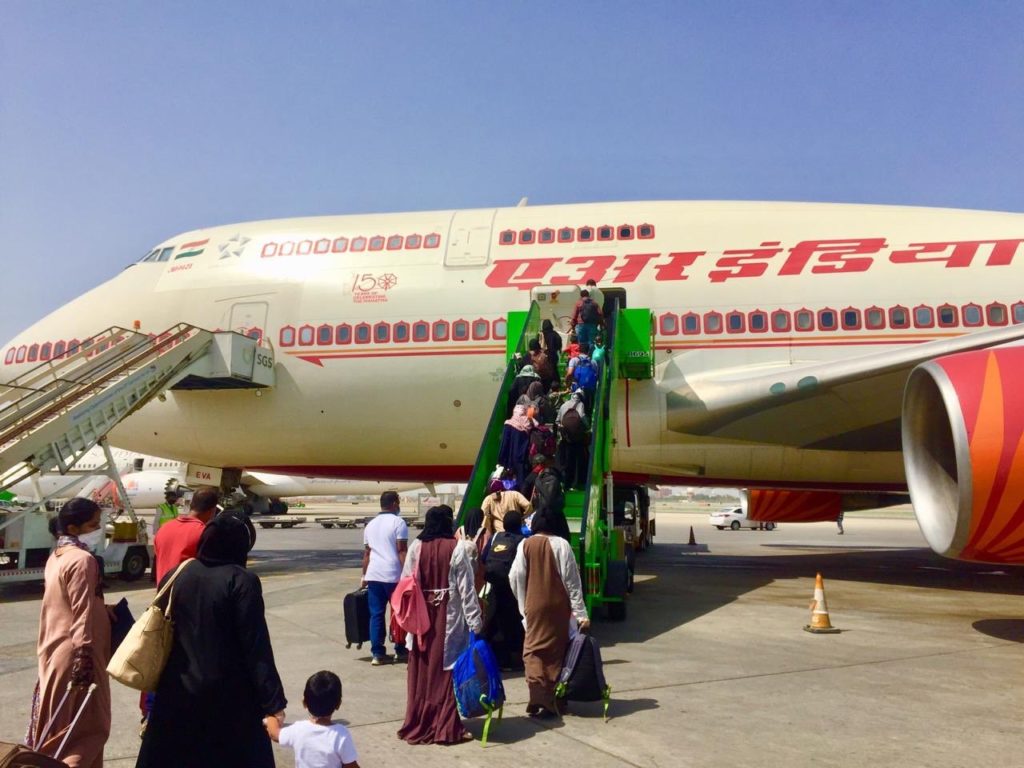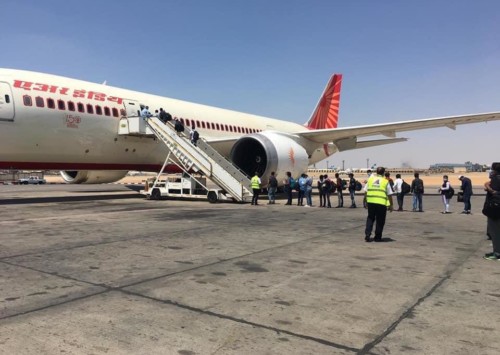Vande Bharat Mission leads to dogfights in the skies

Air India aircraft ferrying stranded Indians from Jeddah to Kochi under Vande Bharat Mission (Courtesy:MEA)
Airlines have been amongst the worst hit by the coronavirus pandemic around the world. Frequent disputes over civil aviation are very likely as governments all over are now doing all they can to help their own carriers.
For almost two months now, Air India has enjoyed a near monopoly in the Indian skies with Vande Bharat Mission. In barely six weeks, the national carrier has flown over 700 missions to over 60 countries and ferried over 145,000 passengers from overseas to India and carried nearly 50,000 foreigners stuck in India back to their homes.
While the flights are meant to be rescue flights to help the Indian citizens who found themselves stuck overseas, since these are chartered flights and not regular flights, Air India has been free to price the tickets as per its will, rather than as per the market conditions or even the fare that prevailed before the global aviation industry was grounded following the lockdown.
As a result, on several sectors the price for one way ticket is almost 50 pc more than the normal return fare or almost 250 pc the single way fare that had prevailed before the lockdown. Though exact data is not available, but Air India could be expected to make a hefty profit on these flights, despite that marginal increase in its own cost of operations due to the sanitary and hygiene measures that have been mandated by the Indian and other governments.
As the Vande Bharat Mission seems to be expanding ceaselessly and instead of being a time-bound and limited affair, it is seeing Indian carriers fly to destinations that they never served before, many other global airlines have begun to complain to their own governments about the unfairness of the entire operation, which deprives any foreign airline from operating any ‘rescue’ flights or even operate regular flights to India as the Indian government has kept Indian airports closed to all scheduled international airlines for the past four months.
The closure was extended just on Friday when the Director General of Civil Aviation, the regulatory body governing civil flights over Indian skies, extended the ban on any international flights till July 15. However, unlike the previous extensions this time around the DGCA did add a footnote saying that resumption of select international flights to some destinations would be examined on a ‘case by case basis’.
‘‘International scheduled flights may be allowed on selected routes by the competent authority on case to case basis,’’ the regulator said in an order dated June 26. The footnote did not come about by accident or by the Indian government’s own free will. This is clearly the result of the ire expressed by the United States and the European Union, among others, about the way India has allowed Air India and some of its other domestic airlines, to capture the passenger flights, while keeping any competition from overseas carriers at bay.
The dispute had been simmering for a while now as most airlines in the world are faced with the worst-ever crisis and almost all of them have resorted to largescale layoffs and other cost-cutting measures. German flag carrier Lufthansa, for instance, has said it would trim its workforce by 22,000, while British Airways has announced over 12,000 job cuts and Air France close to 10,000. Also, most of the carriers, ranging from Cathay Pacific in the East to several leading airlines in the United States, have received bailout packages worth billions of dollars each.
In such a situation, as lockdowns ease around the world and some travel resumes, most airlines are closely watching any revenue opportunities and are unlikely to let go of any possible business, however minuscule or competitive it may seem to be. Airlines have traditionally been extremely competitive and also often protected by their respective governments as most consider airlines to be key to their national sovereignty as a strong currency and a strong military. This is the reason why most countries go in for only bilateral deals, with each miserly guarding the landing spots and the number of seats that they give to a foreign airline.
But since the outbreak of the pandemic, this rivalry and market protection has reached unprecedented levels, making the governments come out in support of even the most outlandish demands by their airlines. This is the primary reason behind the intervention by the US and EU which have both threatened to prohibit Air India from operating any more chartered flights to their countries unless India allows regular flights for their own carriers.
Thus expect the Indian government to allow airlines from key countries such as the US, UK, Germany, France, Canada and the UAE, among others, to restart at least some flights to India. This in itself may not be much good news for Air India or other Indian carriers like Indigo or SpiceJet, but for the Indian outbound travel industry and to certain extent the inbound tourism players, these flights would be like the manna from the heaven.










